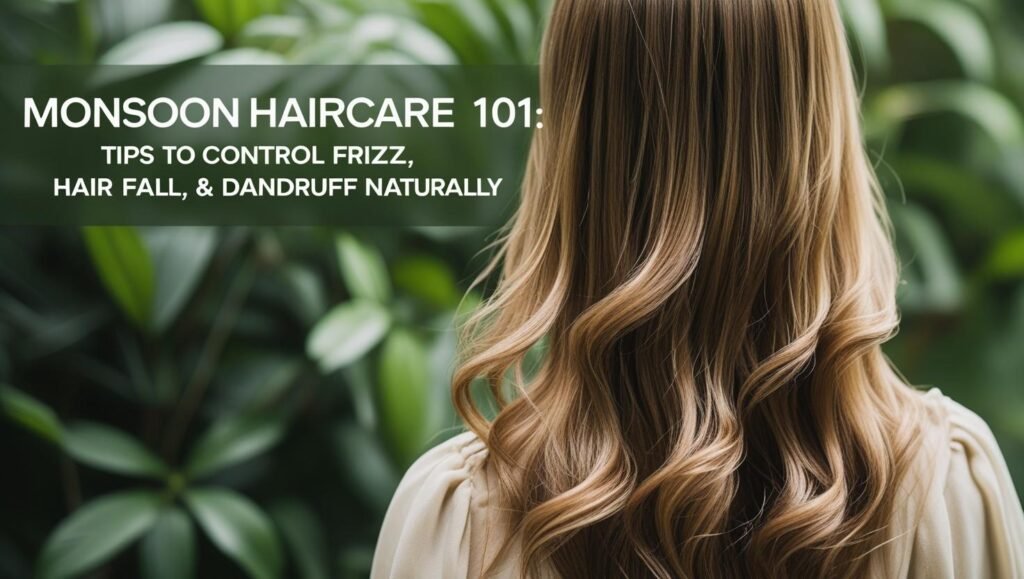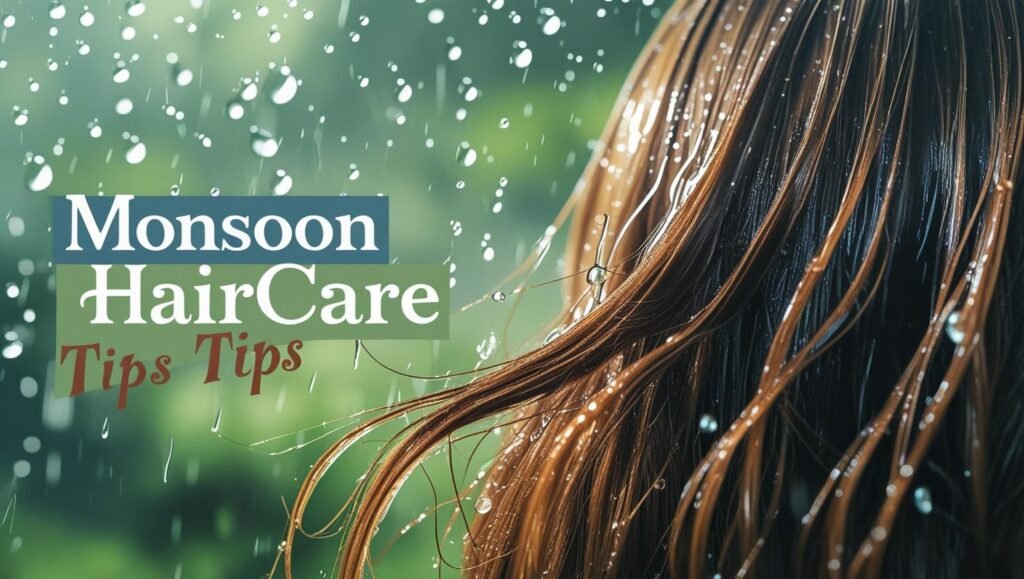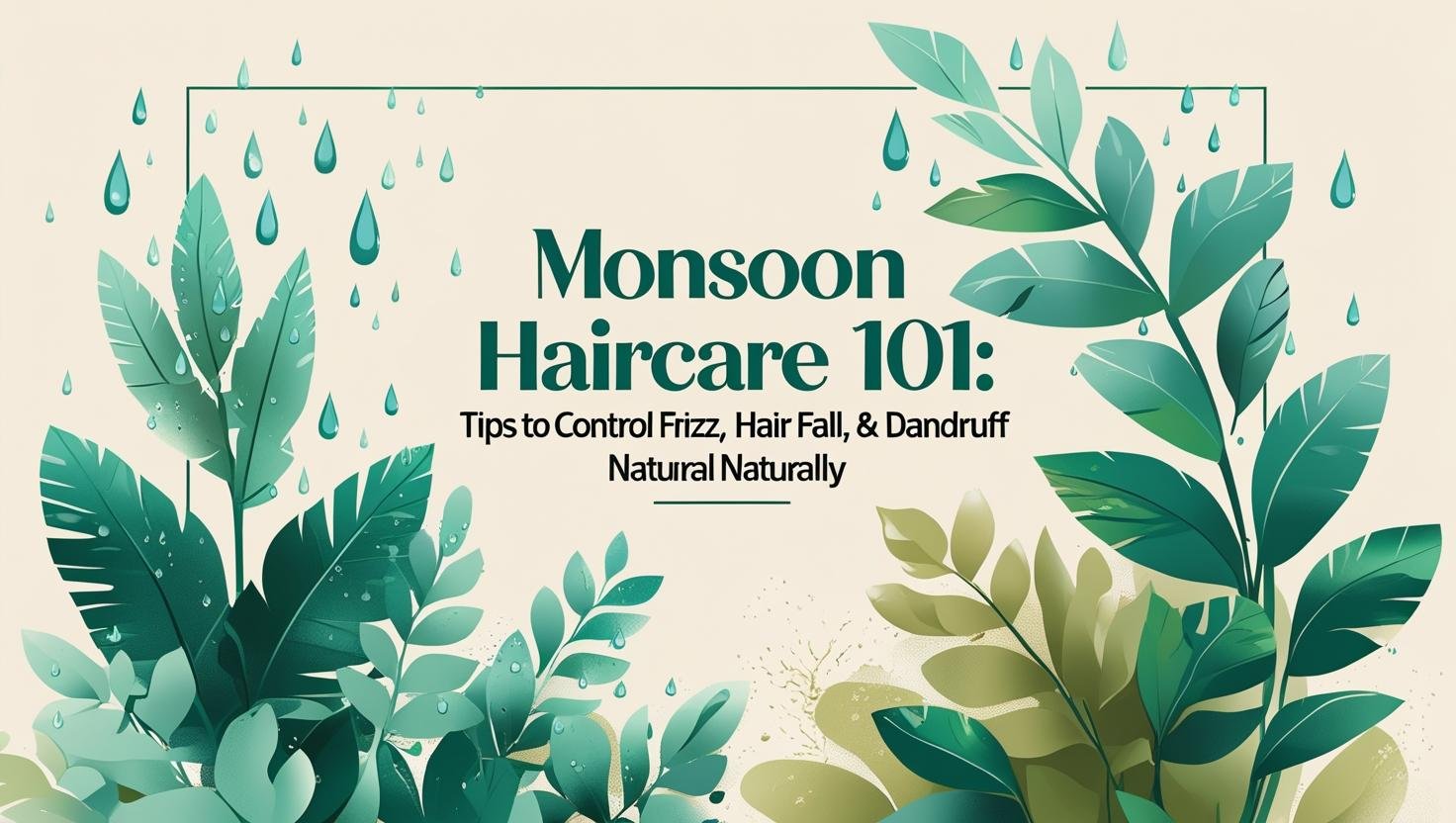Table of Contents

🌧️ Why Does Monsoon Affect Your Hair?
The monsoon brings much-needed relief from the heat, but the increased humidity, damp weather, and sudden temperature changes can be quite harsh on your hair. Whether it’s constant frizz, a greasy scalp, unexpected hair fall, or recurring dandruff, your hair is more vulnerable during this season.
When humidity rises, the hair shaft absorbs moisture and swells, causing the outer layer (cuticle) to lift. This results in rough, frizzy, and unmanageable hair. The scalp becomes oily due to excess sebum production while also attracting dirt and pollutants, creating the perfect breeding ground for dandruff and fungal infections.
The good news? With the right monsoon haircare routine and a few DIY remedies, you can keep your locks nourished and stress-free all season.
❔ Why Your Hair Needs Special Care When the Rains Arrive?
The southwest monsoon turns the Indian subcontinent lush, but it also ushers in 75–90 percent humidity, erratic downpours, and a sudden spike in airborne microbes. These environmental shifts wreak havoc on hair cuticles, scalp microbiome, and sebum levels, leading to three universal complaints: frizz, dandruff, and seasonal hair fall. The good news? A few strategic tweaks to your wash‑day ritual and daily habits can safeguard shine, volume, and scalp health all season long.

🧴 1. Switch to a Mild, Sulfate-Free Shampoo
During monsoon, your scalp may get greasy faster than usual. While it’s tempting to shampoo daily, harsh shampoos can strip your scalp of natural oils, making it dry and irritated. Choose a sulfate-free, gentle shampoo that cleanses without disturbing your scalp’s pH.
Natural Tip: Opt for shampoos infused with neem, tea tree, or aloe vera. They help control dandruff and soothe the scalp.
🪙 2. Oil Massage – But the Right Way
Oiling can be beneficial in the monsoon, if done right. Avoid heavy oils like mustard or coconut, which may clog pores during humid weather.
Instead, try:
- Jojoba oil mimics the scalp’s natural oils.
- Tea tree oil – great for dandruff and itchiness.
- Argan oil tames frizz and adds shine.
Pro Tip: Apply warm oil 30–45 minutes before shampooing (maximum 1-2 hours). Avoid leaving it overnight during monsoon—it may trap moisture and worsen fungal growth.
💨 3. Keep Your Scalp Dry and Clean
Damp scalp = breeding ground for infections. Always dry your hair thoroughly after washing. Avoid tying your hair when it’s wet—this weakens the roots and leads to hair fall.
Best practices:
- Use a microfiber towel to soak up excess water.
- Let hair air-dry or use a blow dryer on a cool setting.
- Never share combs or towels during monsoon season.
🌬️ 4. Say No to Heat Styling
Your hair is already more porous in the monsoon. Adding heat styling (like straighteners or curling irons) can cause even more damage. Embrace your natural texture!
If styling is necessary:
- Use a heat protectant spray.
- Limit heat use to once a week.
- Go for protective styles like buns, loose braids, or scarf hairstyles.
🥗 5. Nourish from Within
Haircare isn’t just external—your diet plays a huge role too.
Include:
- Protein-rich foods – eggs, dal, tofu.
- Omega-3 fatty acids are found in walnuts and flaxseeds.
- Biotin-rich foods: almonds, spinach, bananas.
- Stay hydrated! Drink 2–3 liters of water daily.
🌧️ Quick Tips for Monsoon Haircare:
✅ Use a wide-toothed comb to detangle wet hair.
✅ Avoid chemical treatments like coloring or rebonding during monsoon.
✅ Keep your scalp sweat-free. Use dry shampoo occasionally.
✅ Get regular trims to avoid split ends.
✅ Protect your hair during rain – carry a scarf or umbrella.
🌿 Final Thoughts: Love Your Hair, Rain or Shine!
With just a few mindful habits and natural remedies, you can keep your hair strong, shiny, and dandruff-free all through the monsoon. The key is balance—don’t over-wash, don’t over-oil, and don’t let your hair stay damp for too long.
Remember, consistency is the real magic. Try these monsoon haircare tips for at least 2–3 weeks, and you’ll begin to see visible changes in your hair health.
Try this DIY remedy this Monsoon ➡ No More Hairfall in Monsoon!
💛 Explore More
- Best 5 Cold-Pressed Oils: The Natural Boost Your Hair Truly Needs
- 5 Amazing Benefits of Rosemary Oil for Hair: Nature’s Answer to Thicker, Healthier Locks
- 7 Best Natural Ingredients to Cure Dandruff Effectively at Home
- 10 Best Natural Ingredients for Thicker, Healthier Hair
- 10 Best Natural Oils for Hair Growth and How to Use Them
Also, if you’re not a part of our amazing family, you’re missing out. Join us today and start your natural skincare and haircare journey, and get help from other community members.




